We take an exclusive look at the forthcoming Nothing Phone (3a) Series
Nothing’s unique design language continues to evolve - the new Phone (3a) Series is the company’s largest, fastest and most distinctive handset to date
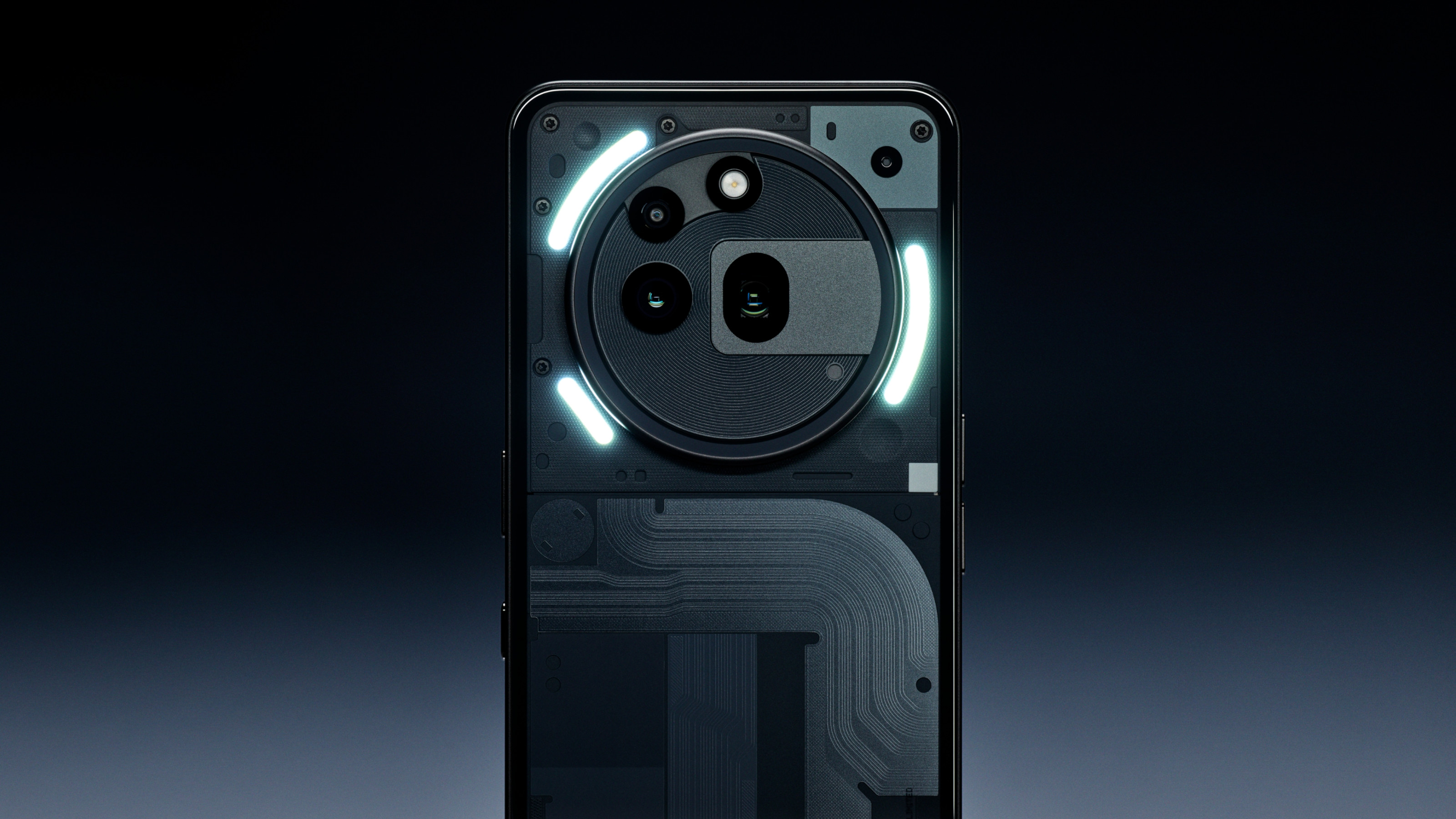
A familiar problem fordesigners of all stripes and disciplines: today’s high street products are last year’s designs, or even a couple of years before that. Nothing’s team is faced with a similar dilemma when discussing the new (to us) Phone (3a), shown here for the first time in an exclusive visit to the tech brand’s North London studio. Adam Bates, Nothing’s Global Design Director, and relative newcomer to the company, Lucy Birley, who heads up the company’s CMF Strategy + Design, talked Wallpaper* through the new handset.
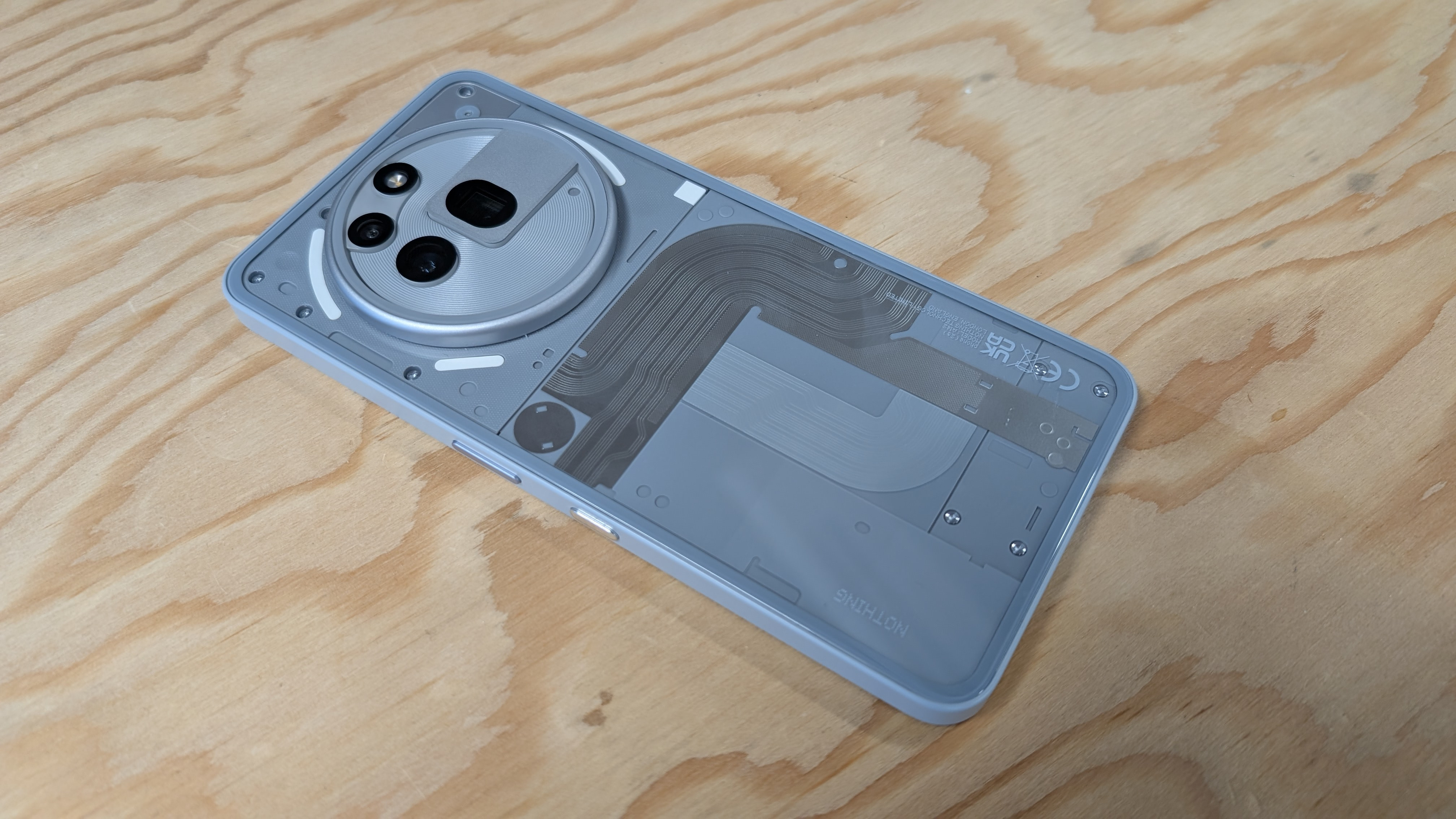
Nothing Phone (3a) Series in silver
Bates has been at Nothing for three years, before which he worked with Dyson, Map Project Office and more. Birley, RCA trained with stints at Dyson, PriestmanGoode, Nissan and Seymourpowell, amongst others, joined in late 2023. Although very fast-growing, Nothing is still a small company, certainly compared to its rivals, with a nimbleness and lightness of touch that eludes the tech giants.
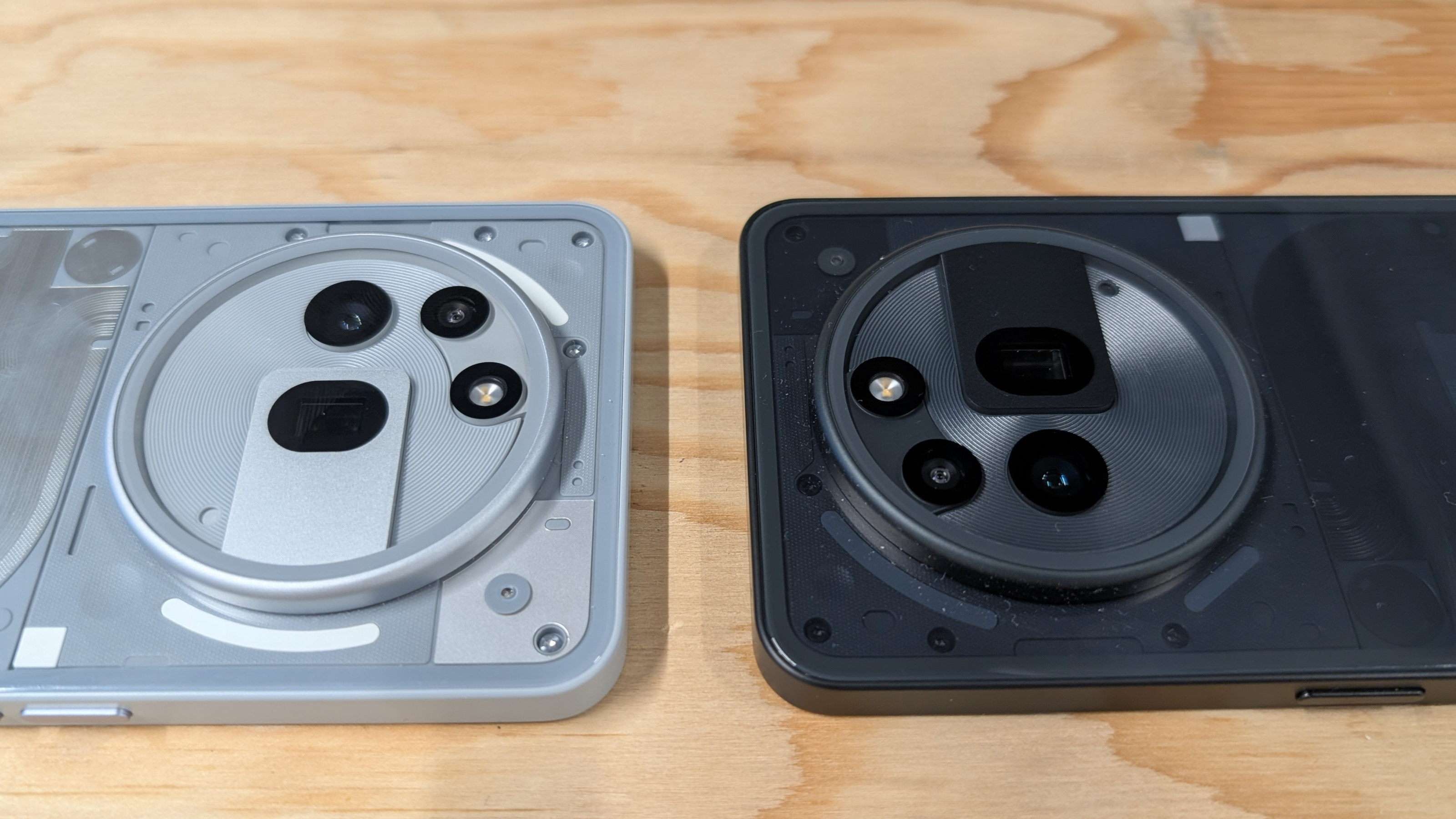
Nothing Phone (3a) Series will be available in silver and black
For someone like Birley, the change of pace and scale has been an eye opener. ‘It’s been really interesting for me to go from the scale of, say, a whole aircraft interior down to what an earbud looks like – it’s a fun challenge.’
We’re here to talk Phone (3a) Series, although in the grand tradition of product design, both Birley and Bates have long since moved on to the next project. Spread out before us are the fruits of last year’s labours, the evolution and development of the successor to Nothing’s most popular handset to date.
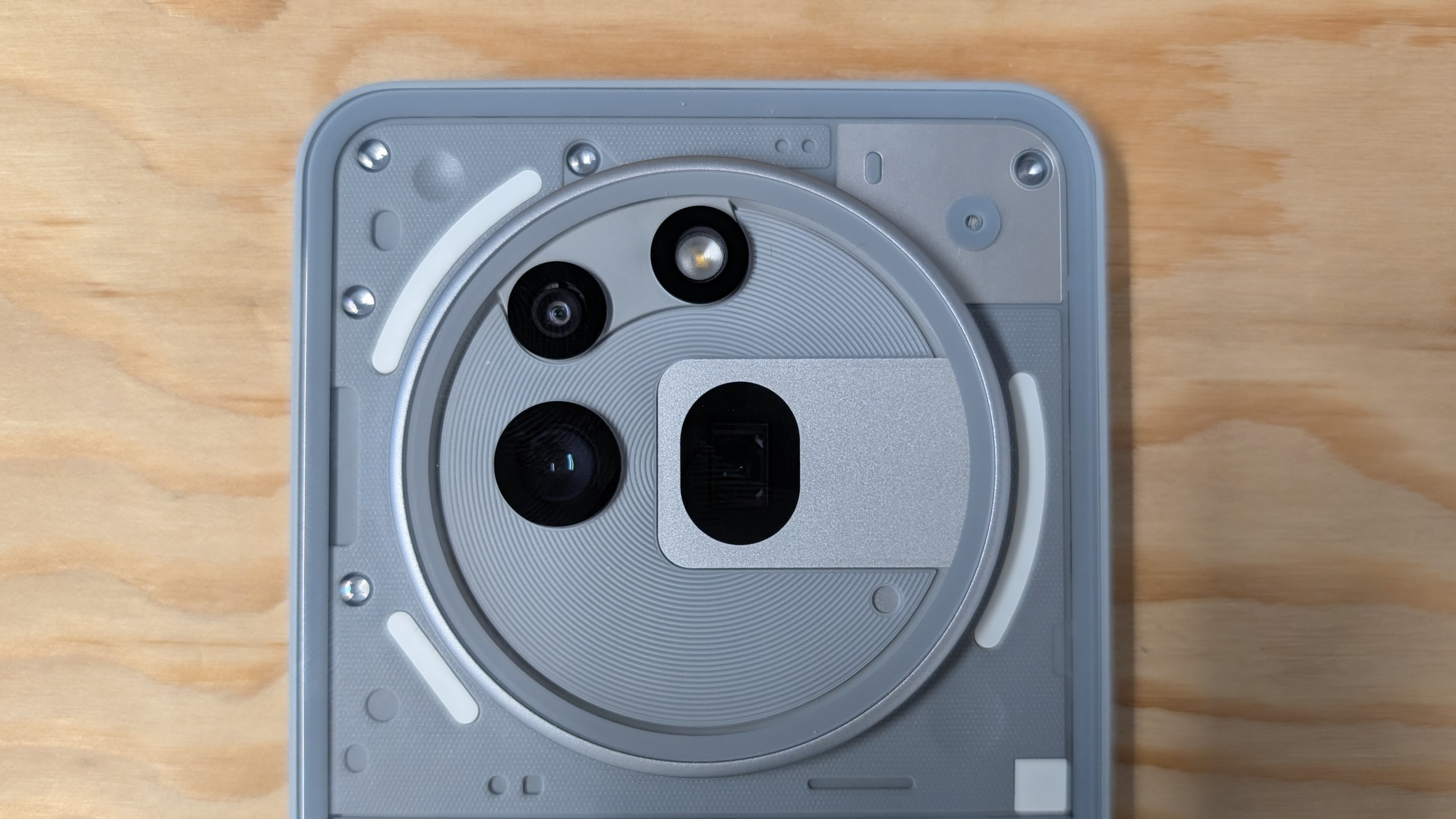
Nothing Phone (3a) Series in silver
‘Phone (2a) got it just right – it really found an audience,’ says Bates, ‘so for (3a) we wanted to build on that but we can also never stand still. Other companies might be more predictable, but Nothing is here to offer something fresh and exciting.’ While admitted that ‘we’ve built that pressure for ourselves,’ Bates nonetheless relishes the challenge of taking a new approach for each handset, even if not wholly reinventing the genre.
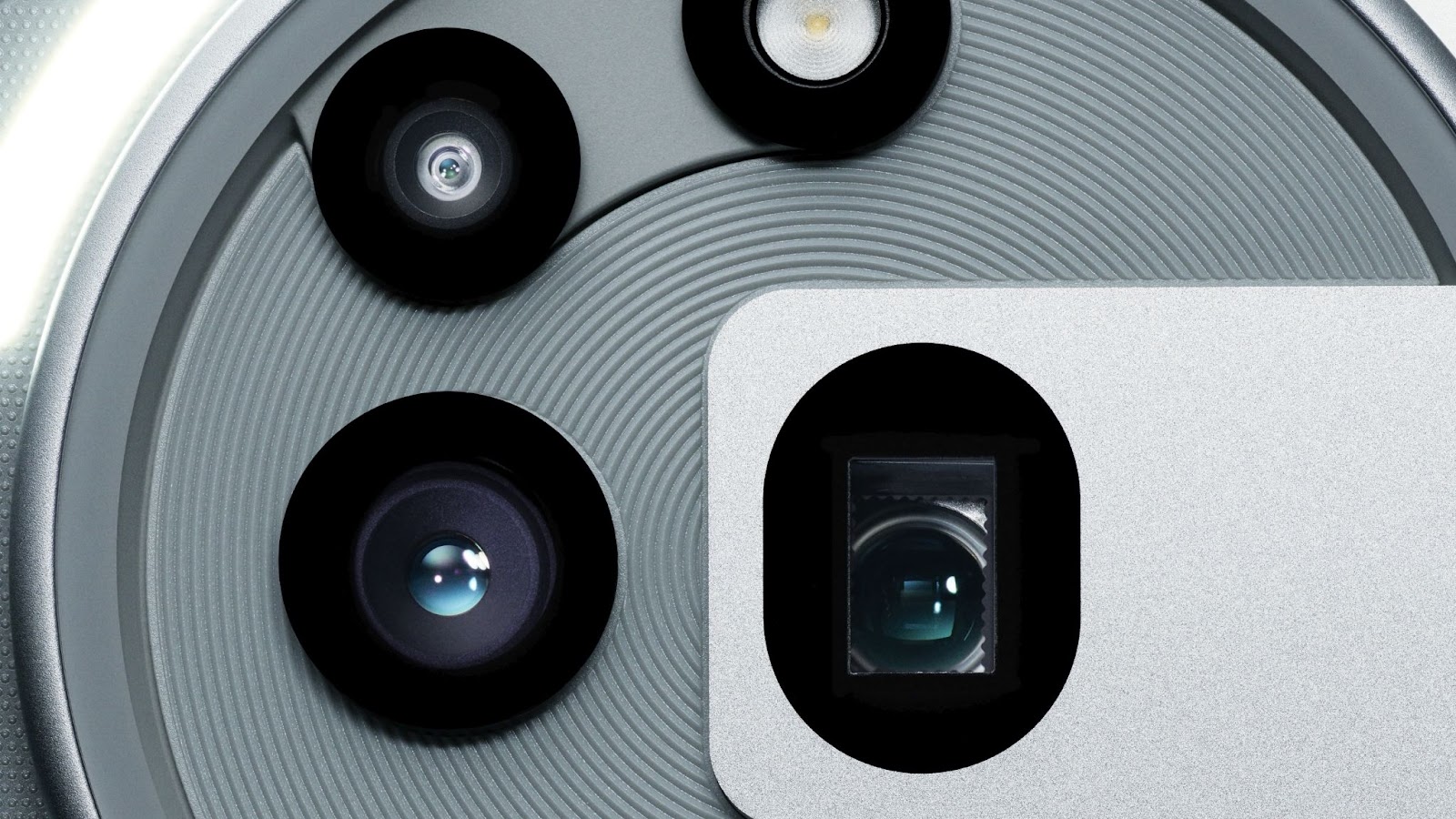
A detail of the Nothing Phone (3a)'s new camera module
‘This is such a fast-moving industry – we have new technology, new suppliers, new competitors all the time,’ he continues, ‘we don’t always know exactly what we have when we start out. The specification evolves.’
The most significant shift from (2a) to (3a) is the introduction of an additional camera module. This in turn radically changes the way the camera systems interface with the flat plane of the phone itself, offering up countless opportunities and options.
Wallpaper* Newsletter
Receive our daily digest of inspiration, escapism and design stories from around the world direct to your inbox.
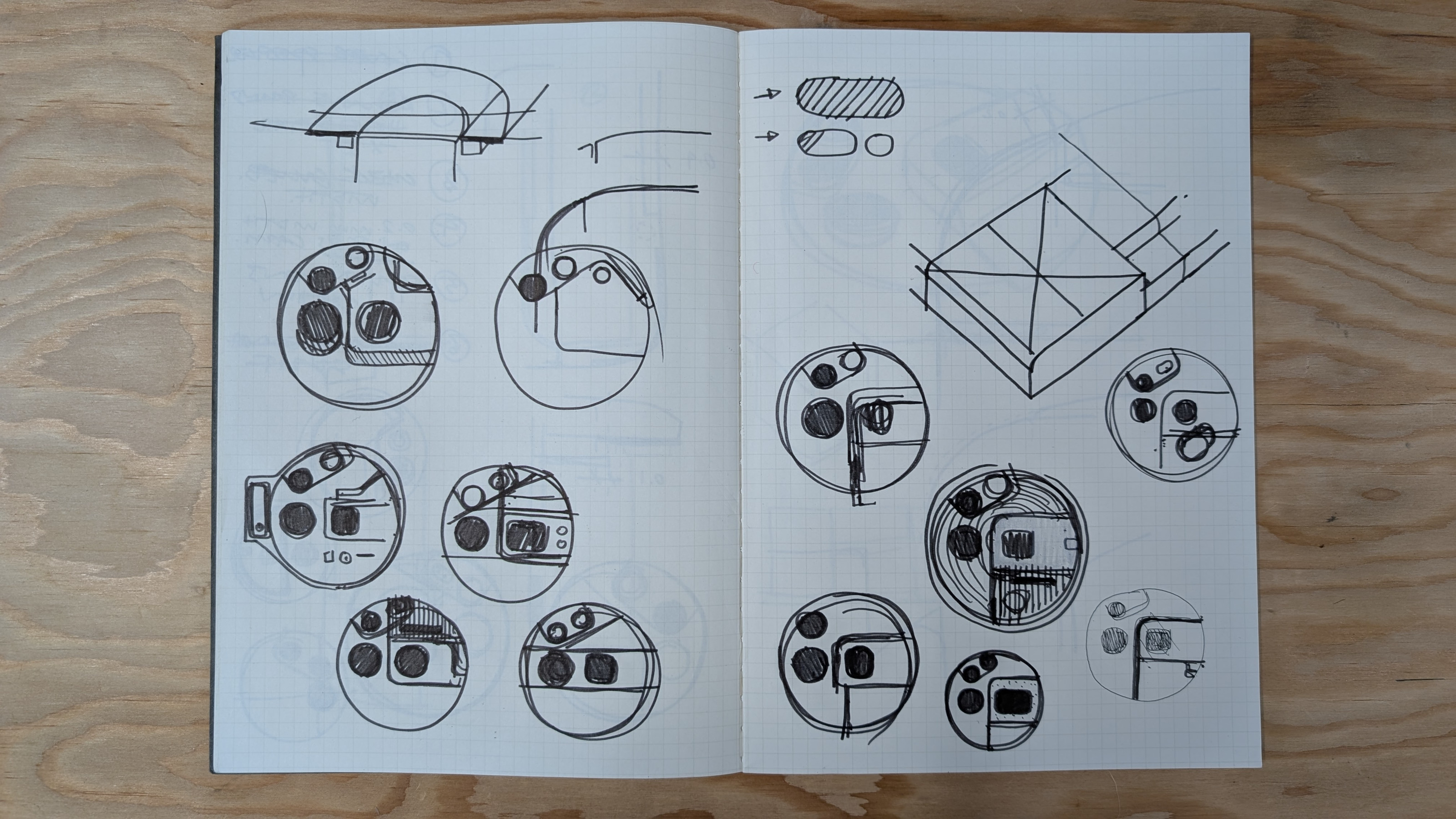
The design process starts with sketching
Unsurprisingly, the new design celebrates the camera module, moving away from the near-anthropomorphic ‘face’ of the (2a) to a circular lens arrangement that has more in common with traditional SLR camera design. ‘We have larger components than we had in the past,’ Bates explains, ‘and we had the opportunity to work with glass and metal, not plastic.’
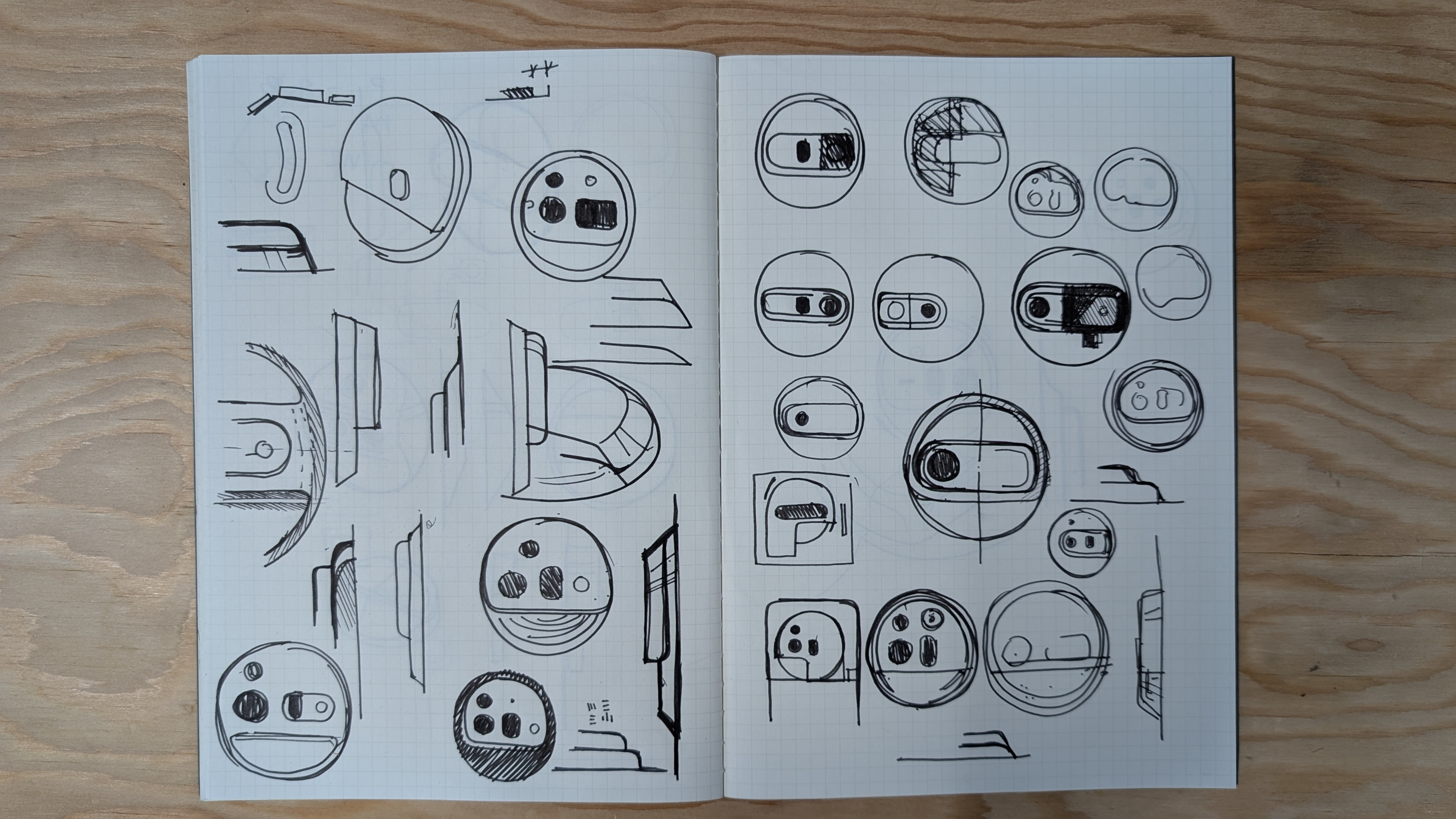
Gradually the form of the new camera module was refined
‘As soon as those things are on the cards, it starts telling us something else about how this product might feel,’ he continues, ‘A lot of product design is about feel.’ Where Phone (2a) was ‘soft’ in its gentle radii and geometry (3a) is ‘crisper and sharper. If you use the materials in the right way, it informs and enhances that geometry.’
The result is a more serious handset, less playful, with a more engineered feeling. ‘It took us a long time to get to the camera arrangement on (2a), even though it feels obvious now,’ Bates admits, emphasising just how important it is to iterate and refine the placement of components over and over again.
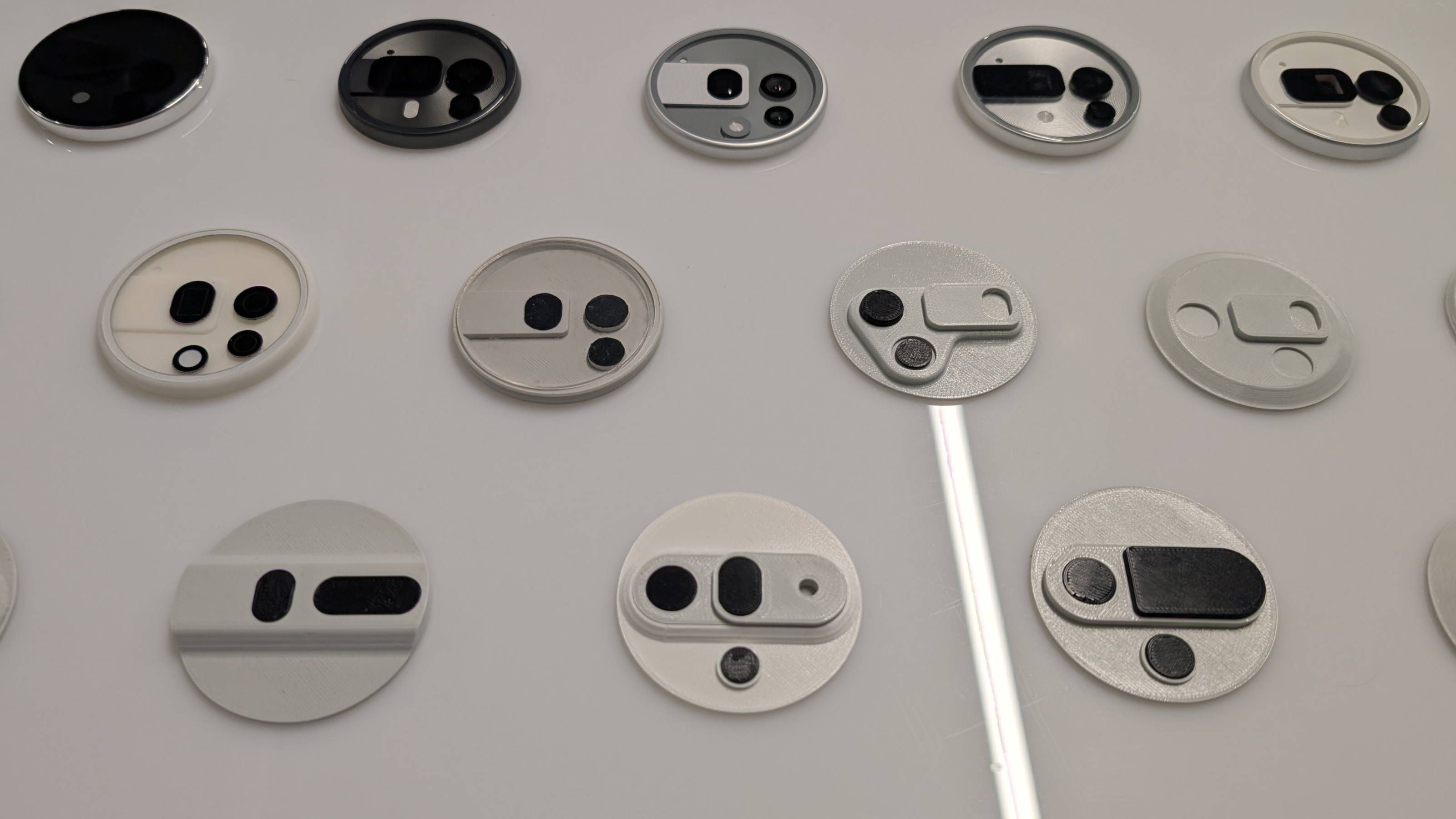
The next step is to iterate with physical models, both 3D printed in house and made in a model shop
Phone (3a) Series marks a step up in Nothing’s camera offering. Ahead of the launch, the company has confirmed that (3a) will feature a ‘pro-level camera system,’ consisting of a 50MP main sensor, 32MP front camera and 8MP ultrawide camera (with an increased field of view), as well as the all-new new 50MP periscope lens (with a Sony sensor).
This component drove the new packaging arrangement, and offers 3x optical zoom, 6x in-sensor zoom, and a 60x ultra (digital) zoom, along with macro photography and a 70mm mode that’s a perfect focal length for portraits. All three cameras take advantage of new AI clarity-enhancing algorithms courtesy of Nothing’s TrueLens Engine 3.0.

The physical evolution of the Phone (3a) camera module
The array of 3D printed layouts, supplemented by more detailed models made in China, shows the millimetre-precise journey to the final design. ‘I think of it like a camera gradually coming into focus,’ Bates says of the process. Form, of course, is nothing without material and texture, and for a CMF designer like Birley, the mobile phone is a small but critical canvas for the physical interaction with technology.
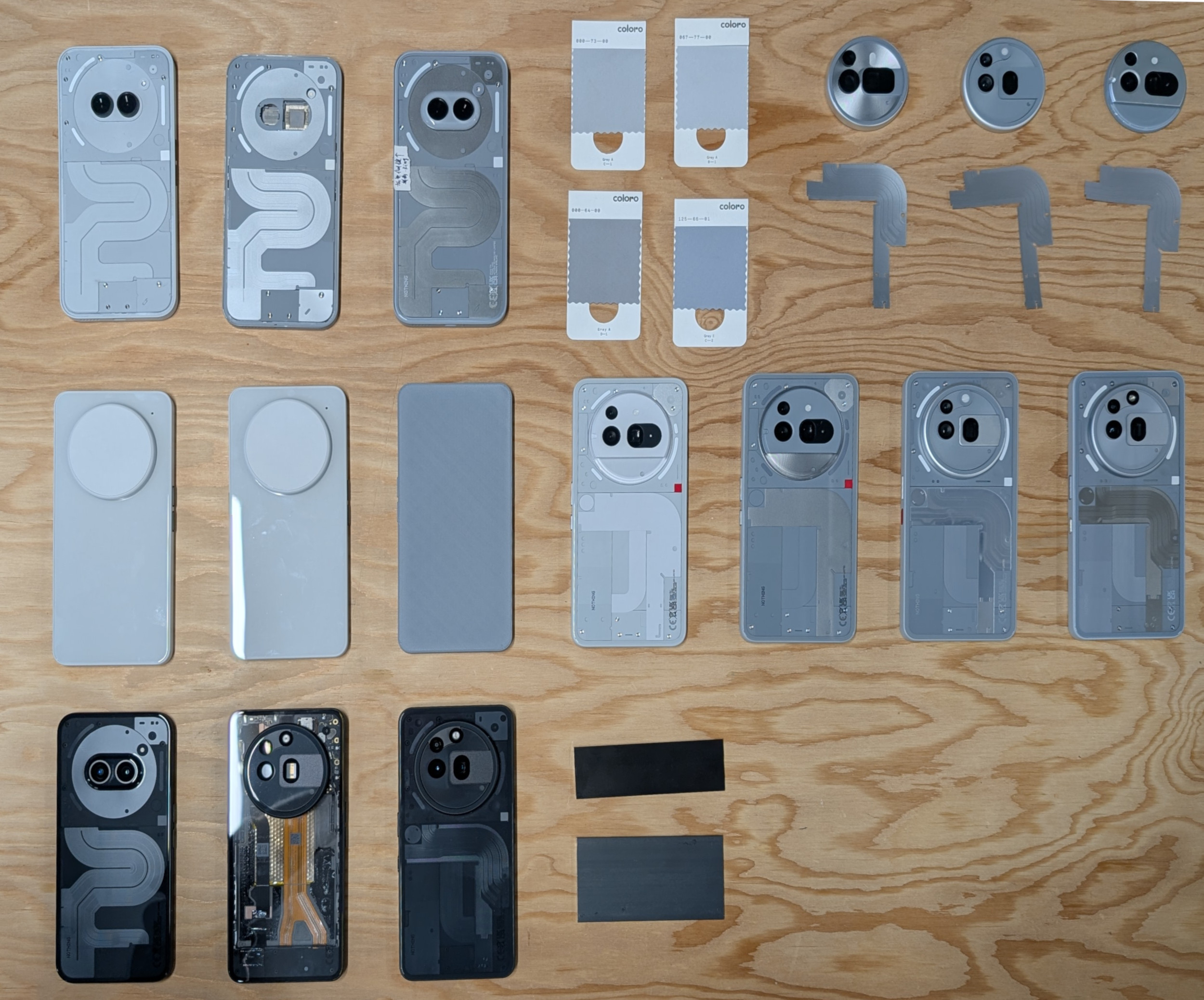
A spread of evolutionary forms, from blank material swatches through to finished concept designs, with the Phone (2a) shown at bottom left
Designing a phone is not just about feel – whether texture or even temperature – but myriad other tiny decisions that add up to a cohesive whole. This goes for aesthetics as well as texture. ‘In terms of colour, we’re not really thinking of what other people are doing,’ Birley concedes, ‘as a challenger brand, part of what we do is push how things look.’
Phone (3a) Series is available in two finishes, black and silver-grey, with the latter leaning hard into the industrial and technical underpinnings of the physical device. Much like how Phone (2a) – and its forebears – were about ‘revealing’ the physical jigsaw of components and circuitry that go into a mobile device, Phone (3a) takes this a little bit further.
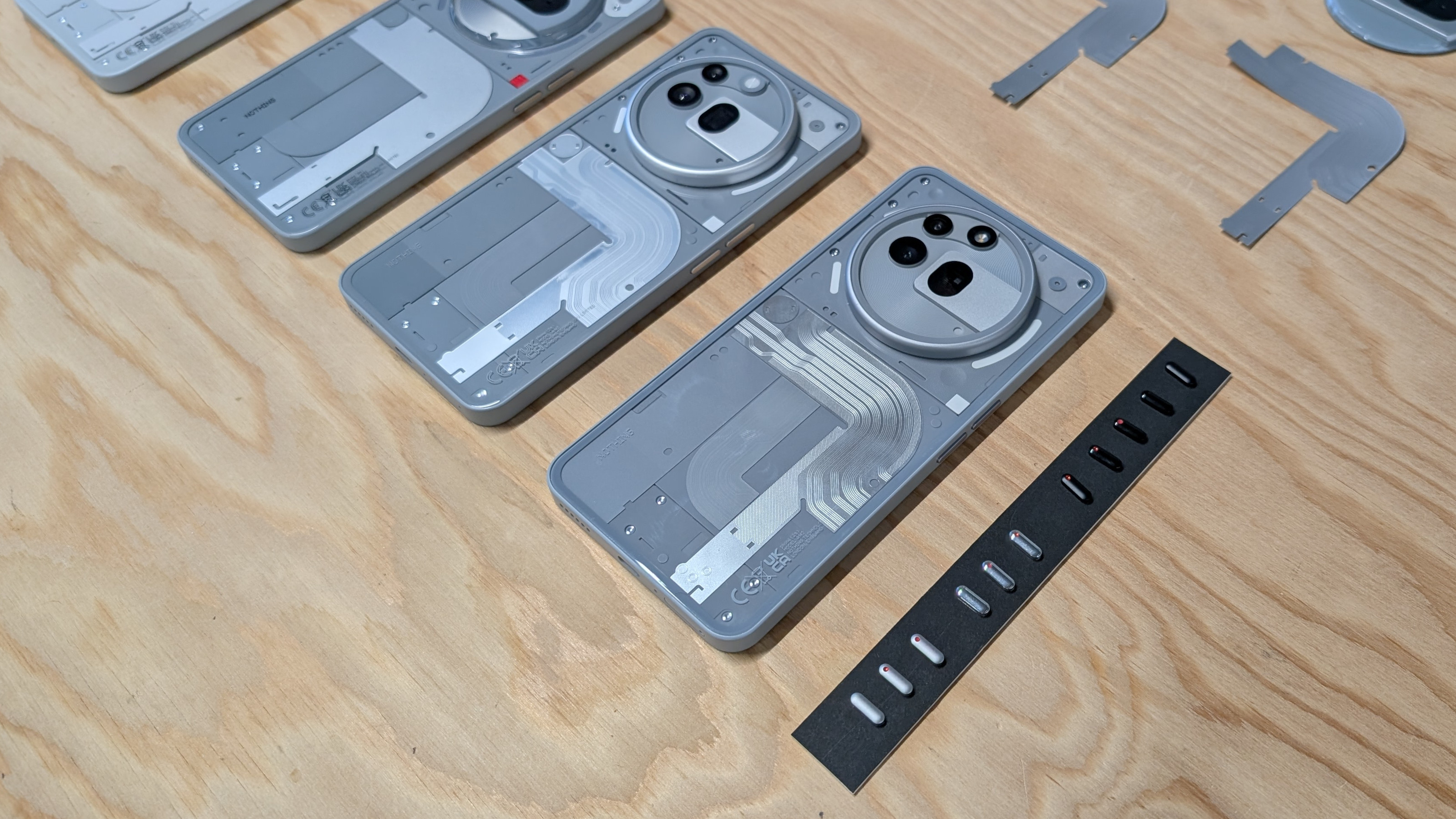
Once the phone's form was established, the design team explored materials, finishes and textures for the new button
There are other new touch points, including a new button (purpose as yet unrevealed) that has a very distinctly different look and feel to the traditional power and volume controls, polished and smooth, not crisp and sharp. Above all, ‘the material leads the expression of the final geometry,’ Birley says.
It’s an understatement to say that Nothing has carved itself a distinct aesthetic in the homogenous world of phone design, and with it more than a few imitators. Nowhere is this more evident than in the aftermarket world of cases, where Nothing’s ‘transparent’ design is knocked off day in, day out. ‘If someone is copying you, you could either be flattered or insulted that they’ve taken a shortcut to that aesthetic,’ Bates admits, but it feels obvious that nothing fazes Nothing.
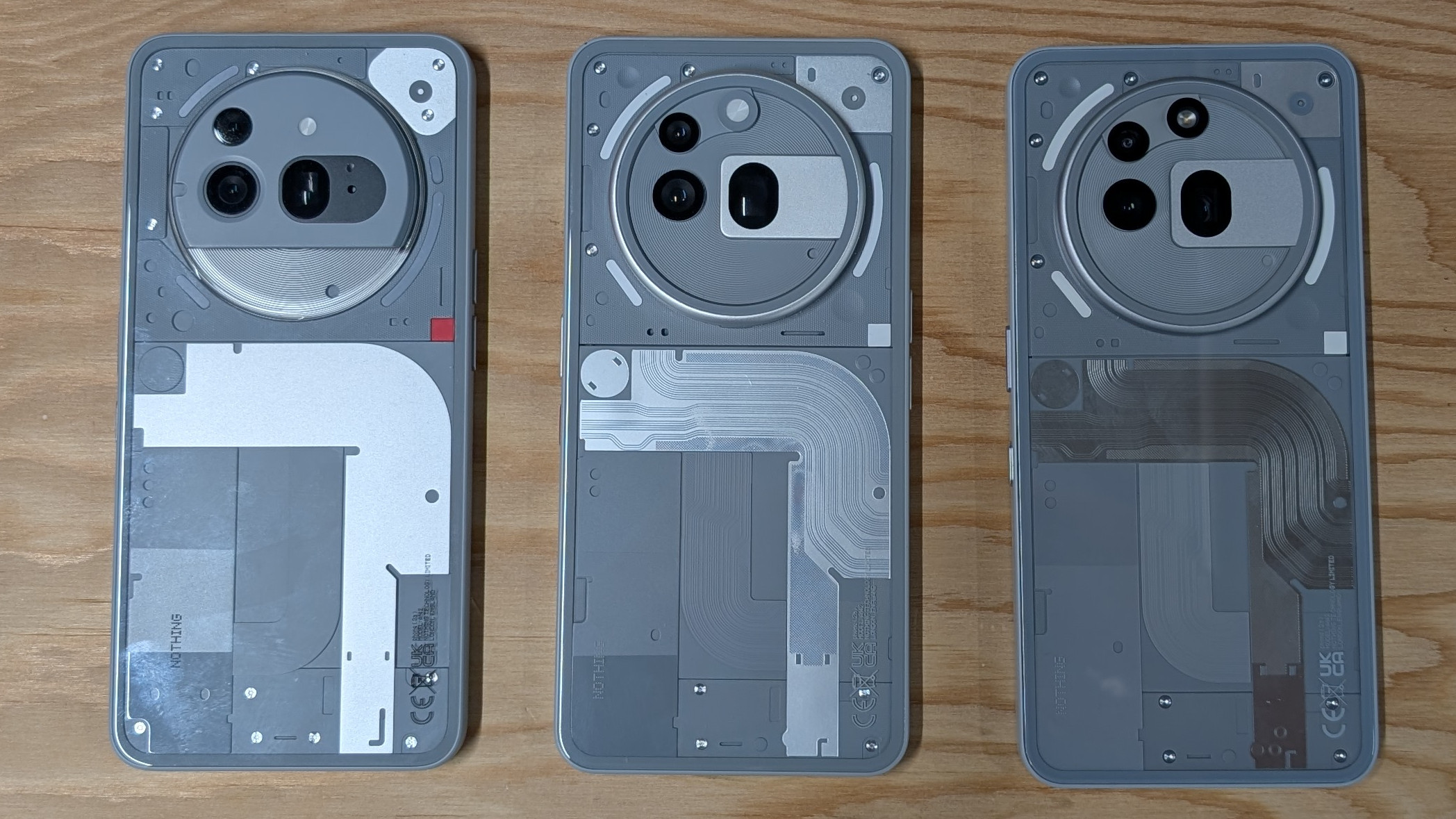
From left to right, the final evolution of the Phone (3a) Series backplate
This includes the obvious extra work that goes into making their phones – and other devices – look the way they do. ‘As soon as you change anything, there’s a huge amount of work for engineering,’ Birley says, laying bare the dance between design and production that guides all consumer products.
‘Ultimately what you do when you change a colour is change the chemistry of a material. [As a result] there’s a great deal of colour tuning that goes on,’ she adds, ‘you’re aiming or an aesthetic target but also wanting to meet the technical requirements. Materials and geometry live in the same timeline – one informs the other.’
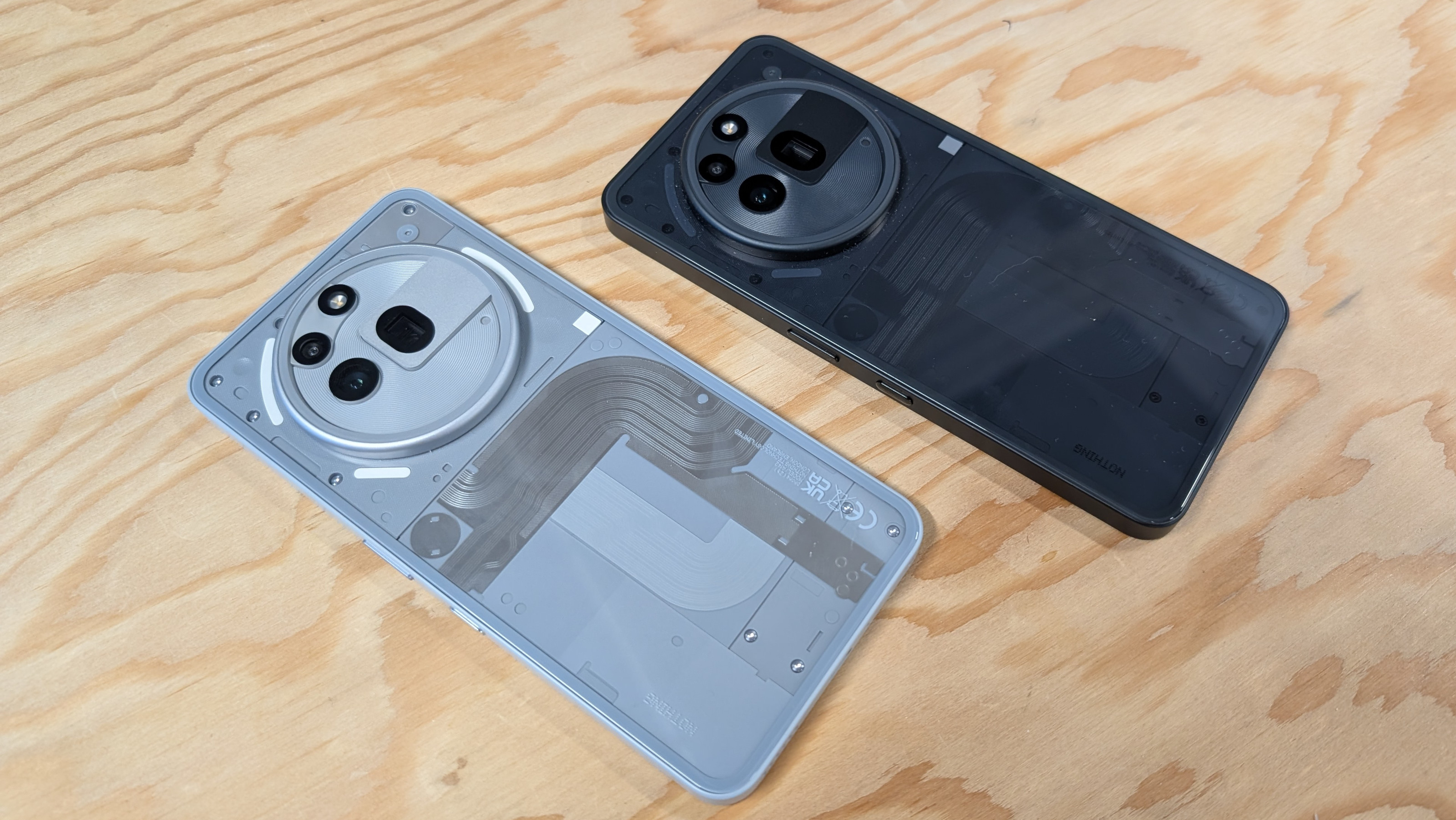
The two new Phone (3a) Series finishes, side by side
In short, it would be easier to have a solid back, but that wouldn’t be the Nothing way. The stylised depiction of the pathways of power, data and information gives the company its distinct identity. This dedication to difference has earned the company something of a cult following.
‘I do think our products are quite emotive,’ says Birley, ‘it’s sometimes hard to feel the evolution of other brands [compared to us].’ Customer engagement, like the recent Nothing (2a) Plus Community Edition show a commitment to grassroots involvement with benefits that go both ways.
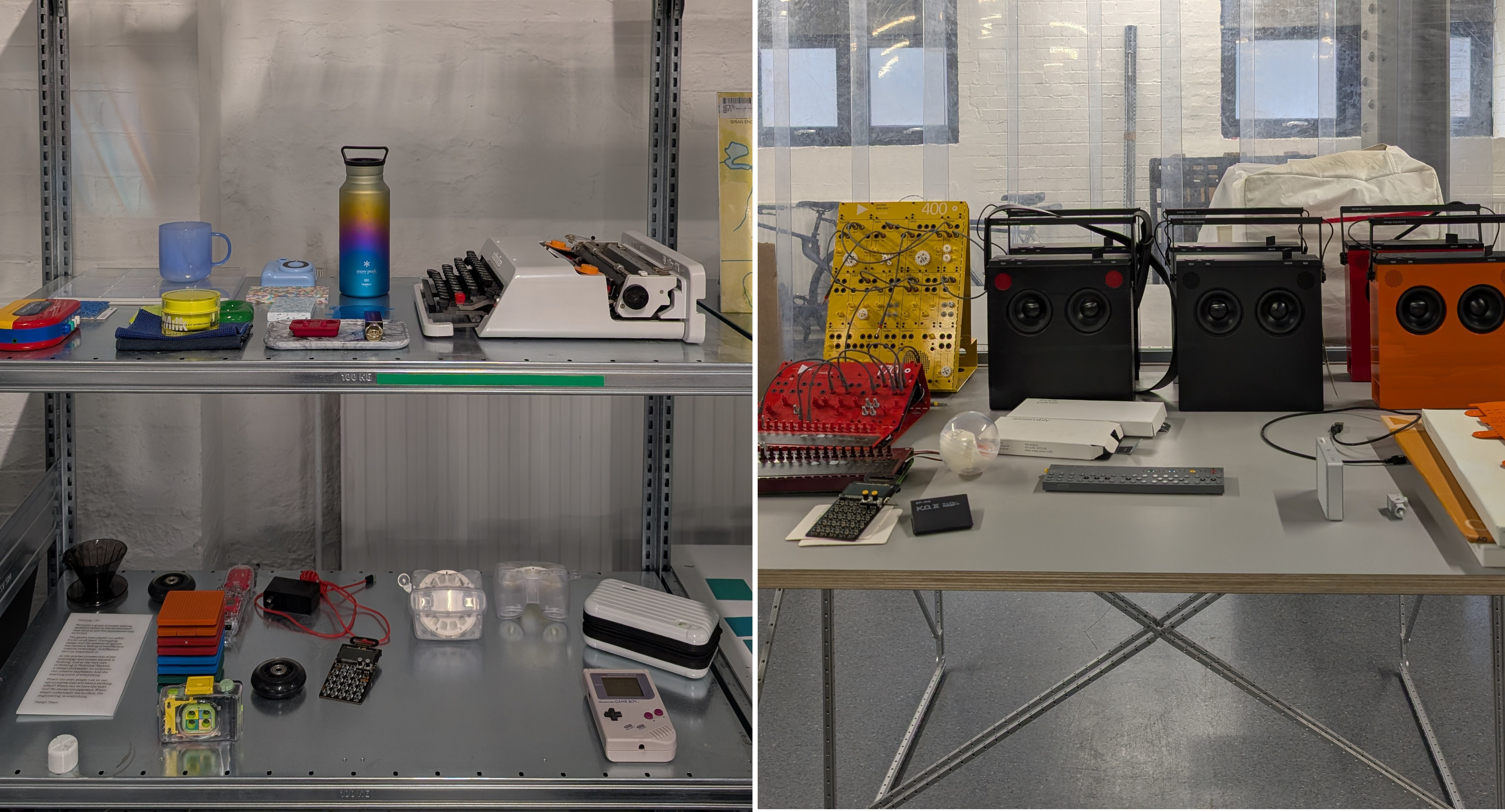
Nothing's London studio remains a treasure trove of esoteric design and electronics, old and new
‘I think if you like an object you tend to use it more,’ Bates says, in response to our suggestion that Nothing’s distinct and evolving line-up might encourage a closer emotional bond with a device or even a passion for collecting the set. ‘It would be lovely to think that some of our products are things people won’t get rid of,’ he adds.
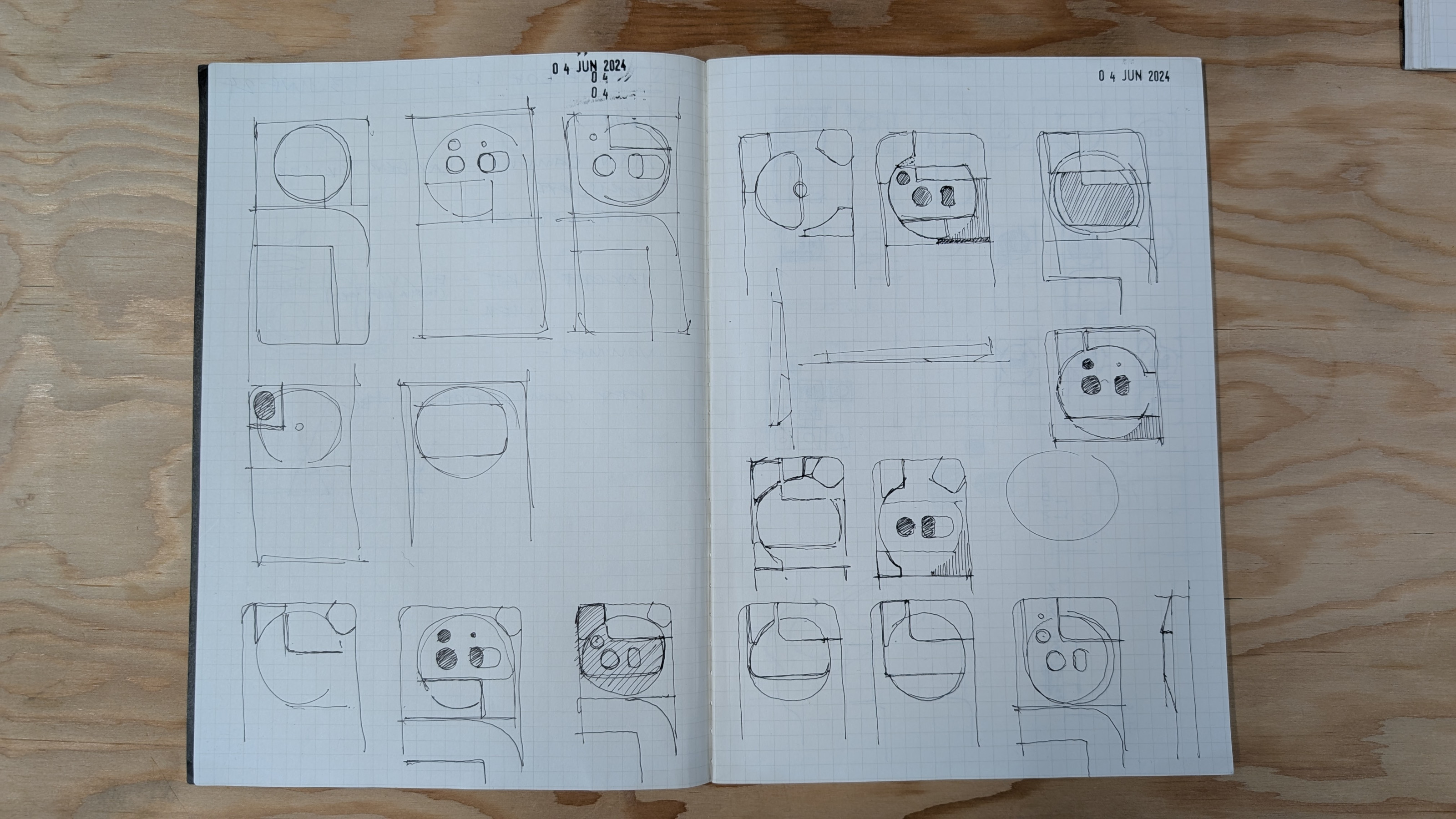
From initial sketches...
The new camera module, glass back, new finishes, and enlarged 6.77” screen, as well as other features yet to be revealed, add up to make the Nothing (3a) Series a clear evolution for the brand, physically and technically. As always, Nothing has managed to express difference through design, mixing minimalism, modernity and material agility in a unique way. ‘It’s about understanding where there’s merit in getting rid of something and/or doing something new,’ Bates concludes, ‘We really don’t need to add another layer of complexity.’
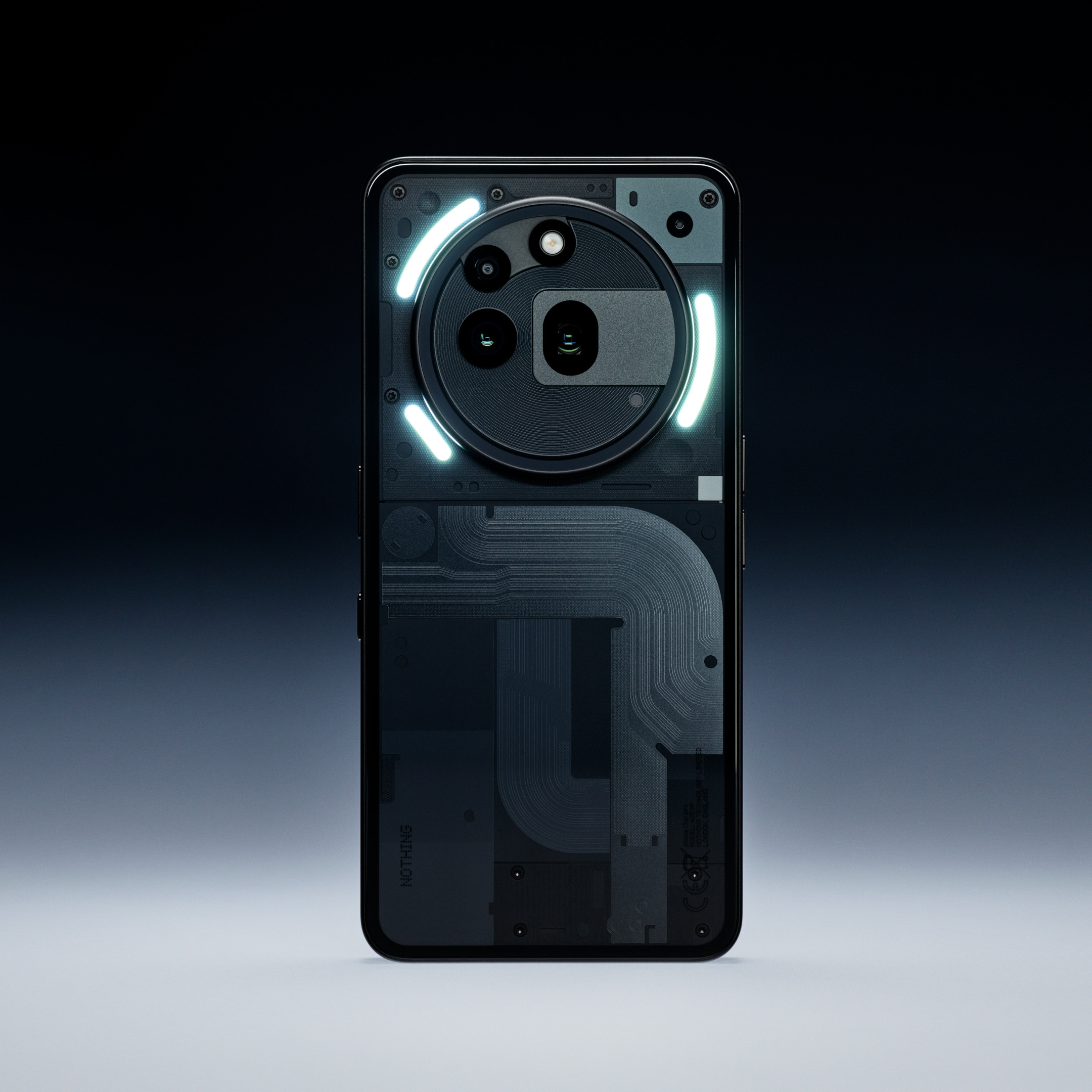
... to the finished Nothing Phone (3a) Series
Nothing Phone (3a), available from 4 March 2025, Nothing.tech, @Nothing
Jonathan Bell has written for Wallpaper* magazine since 1999, covering everything from architecture and transport design to books, tech and graphic design. He is now the magazine’s Transport and Technology Editor. Jonathan has written and edited 15 books, including Concept Car Design, 21st Century House, and The New Modern House. He is also the host of Wallpaper’s first podcast.
-
 Put these emerging artists on your radar
Put these emerging artists on your radarThis crop of six new talents is poised to shake up the art world. Get to know them now
By Tianna Williams
-
 Dining at Pyrá feels like a Mediterranean kiss on both cheeks
Dining at Pyrá feels like a Mediterranean kiss on both cheeksDesigned by House of Dré, this Lonsdale Road addition dishes up an enticing fusion of Greek and Spanish cooking
By Sofia de la Cruz
-
 Creased, crumpled: S/S 2025 menswear is about clothes that have ‘lived a life’
Creased, crumpled: S/S 2025 menswear is about clothes that have ‘lived a life’The S/S 2025 menswear collections see designers embrace the creased and the crumpled, conjuring a mood of laidback languor that ran through the season – captured here by photographer Steve Harnacke and stylist Nicola Neri for Wallpaper*
By Jack Moss